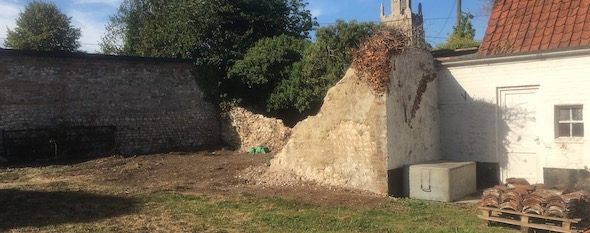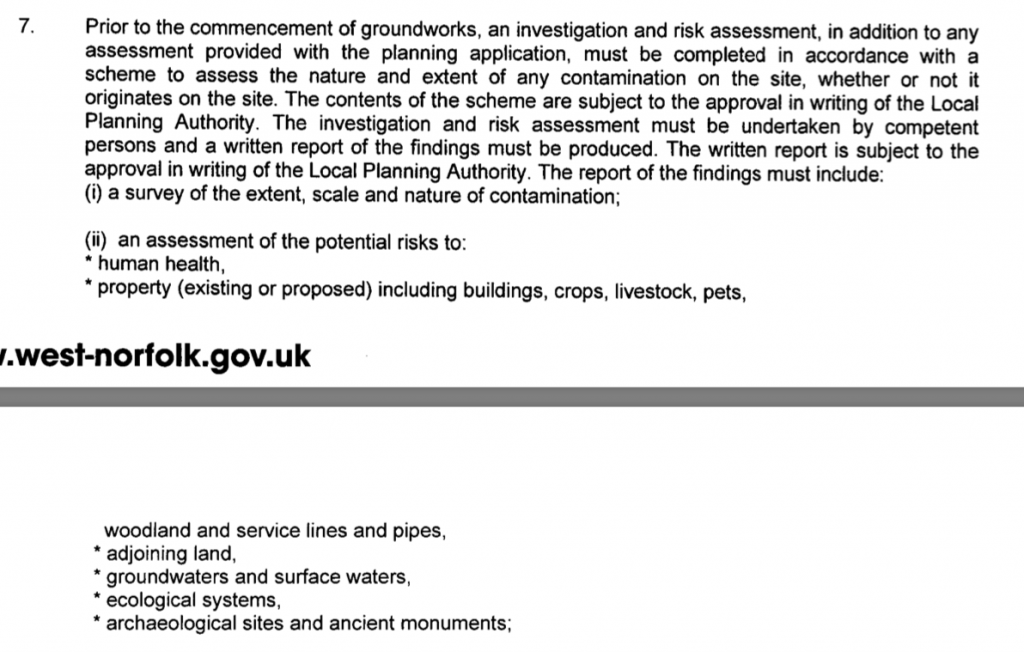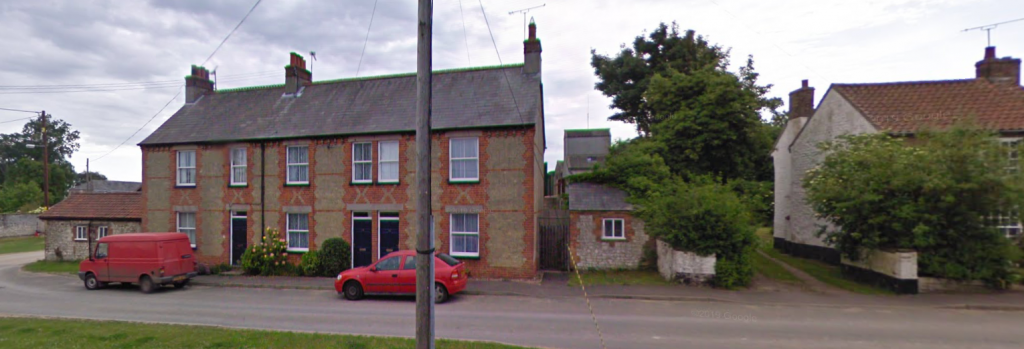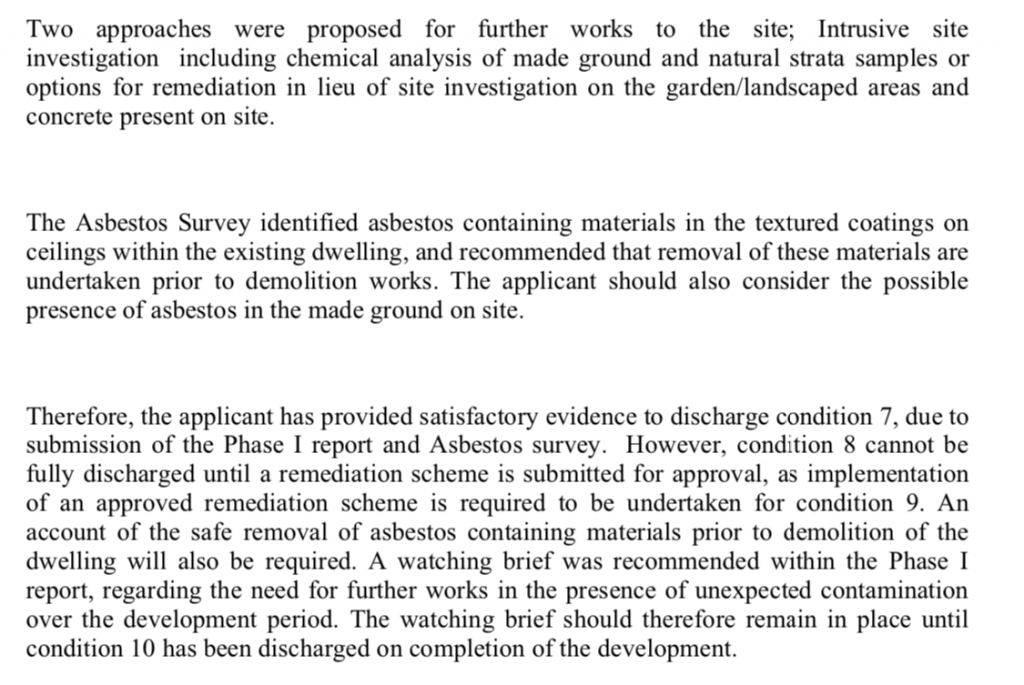Residential Development, Globe Street, Methwold, Thetford, Norfolk, IP26
Case Study Reference: CS19-08-17
Planning Authority: King's Lynn and West Norfolk Borough Council
Planning Reference: 18/00994/F
Synopsis:
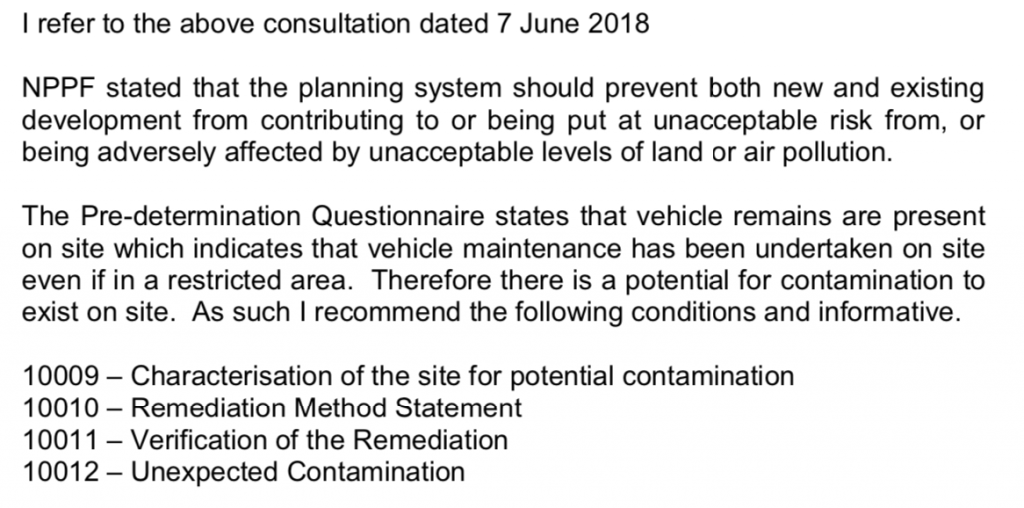 As part of the consultations the planning authority undertake when deciding a planning application the local contaminated land officer was consulted who identified a supporting document (pre-determination questionnaire) that stated that ‘vehicle remains’ were present on the site indicating vehicle maintenance had been undertaken on site, based on this a contaminated land planning condition was attached to the decision notice.
As part of the consultations the planning authority undertake when deciding a planning application the local contaminated land officer was consulted who identified a supporting document (pre-determination questionnaire) that stated that ‘vehicle remains’ were present on the site indicating vehicle maintenance had been undertaken on site, based on this a contaminated land planning condition was attached to the decision notice.
The first stage to discharging condition 1i and 7ii was to prepare a desk study report, which assesses the past uses of the site (historical Ordnance Survey maps, arial plates etc.) as well as any information held by regulators (BGS, Coal Authority, local authority, Environment Agency etc.).
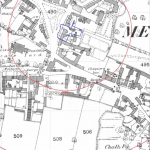 The historical review indicated the site was developed before the publication of the first Ordnance Survey map in 1883 and the site had changed little, street level imagery identified the western
The historical review indicated the site was developed before the publication of the first Ordnance Survey map in 1883 and the site had changed little, street level imagery identified the western 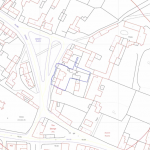 building as a dwelling.
building as a dwelling.
A chalk pit was identified to the south of the site on the 1883 map, which was identified on subsequent maps.
Data provided by regulatory bodies did not identify any further information.
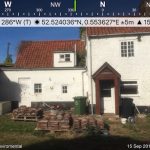 On completion of the desk based review a site walkover survey
On completion of the desk based review a site walkover survey 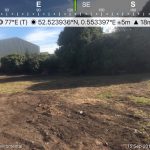 was undertake, this revealed the buildings on site were a dwelling and two outbuildings, no evidence of vehicle remains were noted, however made ground was identified on the site.
was undertake, this revealed the buildings on site were a dwelling and two outbuildings, no evidence of vehicle remains were noted, however made ground was identified on the site.
Whilst there was no evidence of vehicle remains on the site the possibility could not be discounted, however based on anecdotal evidence goven by the client stating vehicle maintenance had not bee undertaken on site this was discounted as a credible source.
Given that the on credible source of contamination was the made ground on site proposals for either a site investigation to assess the risk from the made ground or remediation based on a reasonable worst case assumption on the levels of contaminants in the made ground was proposed as well as a watching brief for low risk sources.
The desk study report was submitted to the local authority for approval (in three parts with the documents for 18/00994/F – ‘DISC_A PHASE I DESK STUDY REPORT’ dated 17th April 2020).
The memo approving the report (DISC_A ENVIRONMENTAL QUALITY CORRESPONDENCE – dated 3rd July 2020) stated both options were acceptable and that the desk study report discharged condition 7 with a remediation scheme required for condition 8.

